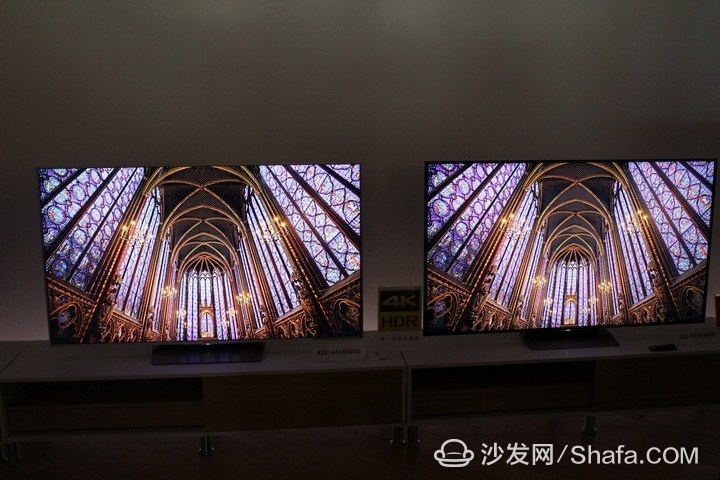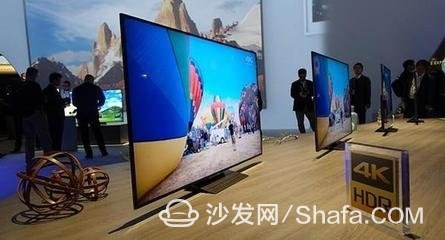In 2017, HDR technology became the "new favorite" among major TV manufacturers. Almost all high-end smart TV models now come equipped with HDR capabilities, making it a key selling point for retailers and consumers alike.
What exactly is HDR technology, and is it worth investing in? Let’s take a closer look at how it works and what benefits it brings to your viewing experience.
**Why Has HDR Become So Popular?**
HDR stands for High Dynamic Range. If you’ve ever used your smartphone’s HDR mode when taking photos, you’re already familiar with the concept. When enabled, the camera captures multiple images at different exposure levels and merges them into one, resulting in a more balanced image with better detail in both bright and dark areas. This same principle applies to TVs, but on a much larger scale.
**How Does HDR Work on TVs?**
On television, HDR refers to a decoding standard that allows the display to show a wider range of colors and brightness levels than traditional TVs. The two most common HDR formats are HDR10 and Dolby Vision. While both offer improved visual quality, they are not fully compatible with each other. That means if a TV doesn’t support Dolby Vision, it may not be able to display content optimized for that format properly.

**Advantages of HDR TVs**
One of the main benefits of HDR TVs is their ability to display more colors and richer details compared to standard 4K TVs. This is due to a broader color gamut and higher bit depth, which results in smoother gradients and more accurate color reproduction. Additionally, HDR enhances contrast, making dark scenes clearer and bright areas more vivid. This leads to a more immersive and lifelike viewing experience.
However, to achieve this, the TV's processor and panel must meet certain standards. This is why HDR is typically found in flagship models rather than budget-friendly options.
**Disadvantages of HDR TVs**
While HDR offers many benefits, there are also some drawbacks. One of the biggest challenges is the need for significantly higher brightness levels. For LCD TVs, this often means a backlight brightness of over 1000 nits, while OLED panels require at least 540 nits. Prolonged use of such high-brightness displays can lead to eye strain or discomfort for some viewers.
Another issue is the limited availability of HDR content. In China, for example, few video platforms currently offer HDR content, and even fewer 4K Blu-ray discs are available. While piracy remains an issue, the lack of HDCP 2.2 cracking has kept most 4K content from being freely shared. However, gaming consoles like the Xbox One S and PlayStation 4 have started to support HDR, offering a promising source of HDR content.
**Should You Buy an HDR TV?**
At the moment, the availability of HDR content is still limited, and the hardware required to support it is not yet widespread. As a result, HDR may not be a deal-breaker for most buyers. However, if you're looking for the best possible picture quality and are willing to wait for more content to become available, an HDR TV could be a great investment for the future.
For more information on smart TVs and streaming boxes, visit Smart TV Information Network Sofa Butler (http://), a leading platform in China for smart TV and box reviews, software updates, and user discussions.
Battery Connection Cable
A battery connection cable are the type of wire used to connect a battery to an electronic device. The are usually made of conductive material, such as copper or aluminum, and has a pair of connectors that connect one end to the positive end of the battery and the other end to the negative end of the battery.
The main function of the battery connection cable are to transmit current and electrical energy. They direct the current from the positive end of the battery through the positive connector, and then transmits it to the electronic device through the cable. At the same time, the negative connector directs the current from the electronic device back to the negative end of the battery, forming a circuit closure.
Battery connection cables are usually of a certain length and flexibility in order to provide a flexible connection between the electronic device and the battery. It may also have a protective housing to protect the cable from damage or wear.
When choosing a battery connection cable, you need to consider factors such as current transmission requirements, battery and device connector types, and cable length and material. Proper selection and use of battery connection cables can ensure a reliable connection and power transfer between the battery and the device.
Battery Connection Cable,Car Battery Wire Harness,Black Connection Cable,Battery Connection Wire Harness
Suzhou Yonghao Cable Co.,Ltd. , https://www.yonghaocable.com


